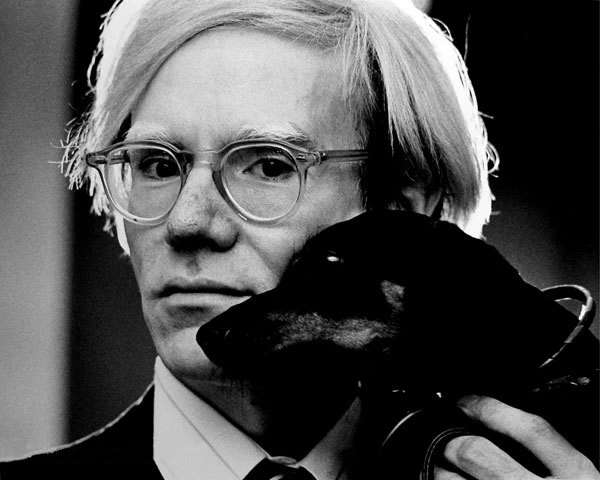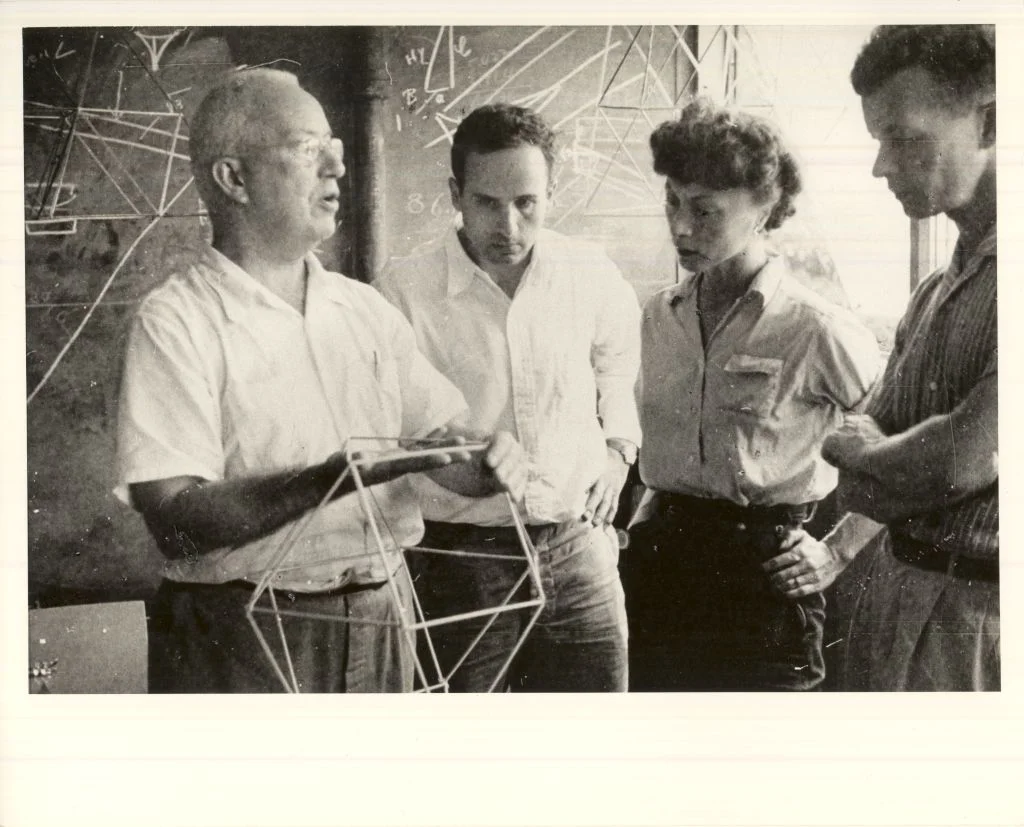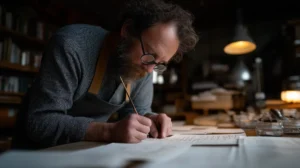Some artists rise with the sun and walk through silence, like Georgia O’Keeffe. Others, like Picasso and Zaha Hadid, barely glance at the morning, building masterpieces late into the night.
From Beethoven’s ritual of counting exactly sixty coffee beans to Salvador Dalí’s micro-naps to catch ideas before they disappeared, the routines that shaped great art were anything but ordinary.
Is there a success recipe hidden in these creative morning routines of the famous artists? How can you find a morning routine for creativity that fits your rhythm best?
1. Artists Creating in Early Mornings


Georgia O’Keeffe walked alone through the desert at dawn. Beethoven counted exactly 60 coffee beans for his morning brew. Vincent van Gogh painted from sunrise to sunset without pausing for anything but quick meals.
For many of history’s greatest artists, early morning was sacred ground.
Before distractions and noise could reach them, the morning offered unmatched clarity and momentum. A silent walk, a carefully brewed coffee, a few hours in an empty hotel room — these small rituals like these helped them slip straight into deep creative work.
Here are some famous artists who used to rise early to create:

Georgia O’Keeffe (Painter)
Georgia O’Keeffe treasured the mornings at Ghost Ranch in New Mexico. She rose with the dawn, and often walked alone through the desert landscape. Sometimes she encountered wildlife, including rattlesnakes, whose rattles she kept as mementos.
After her morning walk, she returned for a simple breakfast (eggs, bread, perhaps chili with garlic oil) and coffee. By early morning, she was in her studio, painting in the natural light.
O’Keeffe’s early rising routine was less about productivity for its own sake and more about aligning herself with the rhythms of the natural world, which in turn deeply informed her work.

Ludwig van Beethoven (Composer)
Beethoven’s mornings were governed by ritual precision. He rose at dawn and prepared his coffee with care, counting out exactly 60 coffee beans per cup. For Beethoven, it was part of setting the stage for a productive day of composing.
Then he worked through the morning, believing the earliest hours were his most fertile creative time.
His day typically continued with a long walk before midday – another daily habit that cleared his mind. It was the consistency of his morning routine (good coffee and concentrated work) that set the foundation for his genius. Beethoven’s example shows how a simple habit, performed with almost ritualistic precision, can prime the pump for creativity each day.
Also Johann Sebastian Bach, famous for his love of coffee, reportedly composed some mornings after indulging in what he called his favorite drink.

Maya Angelou (Writer/Poet)
Maya Angelou structured her mornings around solitude. She rented hotel rooms to write in, believing that neutral, anonymous spaces minimized distractions.
Typically, she arrived to work around 6:30 a.m., sometimes with a small glass of sherry nearby, and wrote until early afternoon.
“I might have it at six-fifteen a.m. […] but usually it’s about eleven o’clock when I’ll have a glass of sherry,” she told an interviewer.
Sherry aside, she stuck to a strict schedule: starting work at dawn and writing until early afternoon. For Angelou, the habit of showing up at her desk every morning, before the day’s bustle, was the key – the occasional sip of sherry was a quirky bonus that helped the words flow.

Vincent van Gogh
(Painter)
Van Gogh harnessed the morning’s vitality to power marathon painting sessions. In 1888, during a burst of creativity in Arles, France, he wrote to his brother Theo:
“Today again from seven o’clock in the morning till six in the evening I worked without stirring, except to take some food… I have no thought of fatigue”.
He would often start at first light and paint straight through the day, sometimes continuing with another canvas at night by lamp-light. When fellow artist Paul Gauguin came to live with him, Van Gogh wrote that their days “pass in working, working all the time… in the evening we are dead beat…and after that, early to bed!”.
Once Van Gogh began at sunrise, he entered a state of flow that carried him for hours, so he ended up using the entire daylight period for creation. While such intensity isn’t sustainable for everyone, Van Gogh’s routine demonstrates the creative momentum that an early start can impart.
OTHER FAMOUS EARLY RISERS:


- Choreographer Twyla Tharp famously starts each day with a 5:30 a.m. workout, treating physical discipline as the foundation for creative focus.
- Novelist Haruki Murakami keeps a strict early morning routine for creativity, waking at 4 a.m. to write for several uninterrupted hours before turning to physical exercise.
2. Artists Creating After Sunset

Pablo Picasso didn’t pick up a brush before 2 p.m. Henri Matisse often worked until three in the morning. Zaha Hadid scheduled her best creative meetings late into the night.
For these artists, real work began when the rest of the world shut down, when the noise of the day faded and the mind could roam. Instead of forcing early starts, they saved their energy for when it naturally surged, turning late hours into their most powerful creative windows.
If your ideas come alive after sunset, trust it — and claim your nights as your real prime time.
Here are some famous artists who created after dark:


Pablo Picasso
(Painter)
Picasso is a classic example of a late starter. Throughout his life, he went to bed in the wee hours and woke up late. He rarely ever painted in the morning.
Instead, Picasso would have a slow start to his day and only begin serious work in the early afternoon. At his Paris studio, he reportedly shut himself in to start painting by 2:00 P.M. and would then work until dusk (or often far into the evening).
Mornings were left for sleeping in, eating, or dealing with personal matters, while the real creative action kicked off later.
“While I work I leave my body outside the door,” Picasso said of his intense focus during those afternoon and night sessions.
Picasso was astonishingly prolific, producing thousands of works. He created a schedule aligned to his personal rhythms, starting when inspiration struck.

Henri Matisse
(Painter)
Matisse’s lifestyle was also more owl than lark. Though extremely disciplined in his work ethic, he often began his work day around 1 or 2 P.M. and continued well into the night.
Accounts note that Matisse might paint from afternoon until 10 at night, have a late dinner, then keep working past midnight – sometimes until 3:00 A.M. He maintained this habit of working in long stretches for decades. As a result, morning for Matisse was a time to sleep, handle correspondence, or prepare for the intensive work to come later. Despite his shifted schedule, he still managed a full day’s output – one biographer noted he worked “twelve hours a day nearly every day for 60 years”.
His key was regularity: he showed up daily to paint, just on a later timetable than most.

Zaha Hadid
(Architect)
The late Zaha Hadid often joked about not being a morning person. In a 2007 interview when asked about the best moment of the day, she replied, “it used to be very late in the evening…”
Colleagues and collaborators similarly recalled that Hadid kept vampiric hours. Her right-hand man, Patrik Schumacher, noted that in her studio they were often working very late nights, every night, with Hadid herself frequently present past midnight, pushing the team toward perfection.
She would sometimes schedule design meetings in the afternoon or evening when her energy was highest. Morning meetings, by contrast, were rare – and if they occurred, Hadid might arrive later than everyone else. While traveling, she also preferred to adjust her schedule as needed rather than forcing early starts.
Hadid’s daily creativity routine demonstrates that in the creative world, night owls can thrive: she produced visionary architectural designs and led a global firm, all while embracing a schedule that many would consider unconventional.

Virgil Abloh
(Designer / DJ)
A more contemporary example of an unorthodox schedule is Virgil Abloh, the fashion designer and multidisciplinary creative. Abloh’s “morning” was everywhere and anywhere: he operated in a nonstop mode that defied traditional routines. It’s well-documented that he survived on about 4 hours of sleep per night and took roughly 300 flights per year to manage his various projects.
In practice, Abloh often woke up on a plane or in a new city; he would dive straight into work by checking his phone and messages. In interviews, he explained that he had no fixed office or desk at all – “everywhere is an office” for him, as long as he had a charged phone.
Abloh’s health-defying schedule (which some might call always on, rather than morning/night) is certainly not a traditional recipe for balance. His case illustrates a modern, tech-enabled daily routine for artists: highly mobile, flexible, and no distinction between morning or evening work. For Abloh, the concept of a calm morning routine was replaced by a continual creative hustle that spanned all hours.
3. Artists Who Followed a Strict Schedule

Many successful creatives craft a fixed schedule or routine every morning – whether for an hour or several – to get themselves into the creative zone. Such routines can include exercise, writing, meditation, or other repeatable actions. The predictability seems to free their mind for creative thinking by removing uncertainty.
Here are examples of artists who followed disciplined morning schedules:


Le Corbusier
(Architect / Painter)
Le Corbusier famously maintained a rigid daily schedule throughout his career.
- He woke up at 6:00 A.M. sharp.
- Immediately after rising, he performed 45 minutes of calisthenics (physical exercises) to get the blood flowing.
- By 7 A.M., he would bring his wife a morning coffee in bed (an endearing part of his routine).
- At 8:00 A.M. he joined her for breakfast.
- Roughly 8:30 until lunch was devoted entirely to personal creative work: painting, drawing, writing, or sketching out architectural ideas in his studio.
He considered these private morning hours sacrosanct and the most fertile part of his day. In fact, even though the artwork he created in the mornings (his paintings and poems) often had no direct relation to his architecture projects, Le Corbusier credited those morning art sessions for his success in architecture.
Only in the early afternoon would he switch modes: at 2:00 P.M. he went to his office to deal with firm business and meet with staff, usually wrapping up by 5:00 P.M.
This highly structured daily routine – exercise, breakfast, creative work, then business – hardly changed over decades. Le Corbusier’s strict schedule ensured that every single morning he fed his artistic side before the demands of the workaday world intruded.

Chuck Close
(Painter / Visual Artist)
While Matisse was a late starter as noted, he was extremely consistent in how he organized his day. He emphasized daily rhythm and reportedly worked at his art for a set number of hours with very little variation day to day.
Similarly, modern painter Chuck Close once said, “In an ideal world, I would work six hours a day, three hours in the morning and three hours in the afternoon” – highlighting the belief that a balanced, regular schedule is beneficial for sustained creativity.
Close’s real life often followed this kind of pattern, treating painting like a steady 9-to-5 job divided by a lunch break.
Close’s emphasis was on steady attendance over inspiration, famously stating, “Inspiration is for amateurs” – meaning that establishing fixed, habitual work periods can sustain creativity even through periods of low motivation or physical limitation.
OTHER FAMOUS ARTISTS WITH STRICT SCHEDULE:


Victor Hugo relied on strict schedules maintained by a valet, using tight morning discipline to ensure consistent writing output.
Benjamin Franklin began his mornings by asking himself, “What good shall I do this day?” — a reflective ritual that helped structure both his creative and civic contributions.
4. Artists Who Had Eccentric HABITS

Salvador Dalí snapped awake from micro-naps to catch dream images. Francis Bacon painted at dawn after nights of drinking. Andy Warhol turned morning phone calls into a living diary.
These eccentric rituals might seem quirky (or crazy) to outsiders, but for the artist they often serve a purpose: jump-starting inspiration, maintaining a creative mindset, or simply coping with the demands of the creative process.
Here we highlight some of the most unconventional morning routines for artists (or, actually, anytime habits):


Salvador Dalí
(Painter)
Dalí’s approach to harnessing inspiration was as surreal as his art. He practiced what he called the “slumber with a key” technique to catch ideas from the border of sleep.
Dalí would sit upright in a chair in the afternoon or morning when drowsy, holding a heavy metal key between his fingers over a plate. As he drifted off, the key would slip from his hand and clatter onto the plate, waking him up immediately. In that split second of micro-sleep, Dalí found himself in a hypnagogic state – the twilight between waking and dreaming – often filled with imaginative visions. Upon waking (after literally a second or two of dozing), he would instantly sketch or note any images that had flashed in his mind.
He and inventor Thomas Edison both used this peculiar napping trick as a creative hack. Dalí effectively turned a simple nap into a tool for artistic ideation.

Andy Warhol
(Artist)
Starting in the mid-1970s, Warhol got in the habit of having a creative morning routine in the form of a phone call to his friend and collaborator Pat Hackett. Over coffee each morning, he would spend anywhere from a few minutes to an hour on the phone with Hackett, recounting in detail everything he had done on the previous day: which parties he went to, which people he saw, what he spent money on, his thoughts and gossip from the New York art scene.
Hackett diligently transcribed these conversations word for word as Warhol’s diary entries. By the time of Warhol’s death in 1987, the stack of typewritten pages exceeded 20,000 pages! Excerpts were later published as The Andy Warhol Diaries.
This quirky morning ritual served multiple purposes: it helped Warhol process his experiences, created a literal diary of his life as an art piece, and gave him a sense of routine amidst a hectic, celebrity-filled lifestyle.

Igor Stravinsky
(Composer)
Stravinsky’s daily routine was fairly strict (he’d compose every morning without fail), but he had one notably odd habit in it. If he ever felt stuck or mentally sluggish while working, Stravinsky would get down on the floor and do a short headstand. He believed that holding a headstand for a minute or so “rests the head and clears the brain”.
This inversion rushes blood to the head (perhaps giving a literal rush of oxygen) and when he came back upright, he often felt mentally refreshed. It was his personal creative reset button. After his headstand, Stravinsky would resume work with renewed focus.
Eccentric as it sounds, the headstand ritual was incorporated into his otherwise orderly mornings at his Los Angeles studio.

Francis Bacon
(Painter)
Francis Bacon’s entire lifestyle was unconventional, and his approach to work/life balance (or lack thereof) was extreme. Bacon was a notorious bon vivant: he’d stay out late drinking and carousing in London’s Soho, often until 3 or 4 A.M. Yet without fail he forced himself to wake up around 6:00 A.M. to paint, even if he was hungover.
He believed his mind was clearest in the raw early hours after only a short, sometimes drunken sleep. Bacon would paint for several hours in the morning light, reaching a stopping point by midday. Only then would he allow himself breakfast or – more typically – head out to his favorite café or bar to meet friends and begin a day of socializing that often rolled right back into another long night of drinking. This cycle repeated daily. He joked that he lived off “champagne for real pain” as a hangover cure, yet this punishing routine produced some of the 20th century’s most powerful paintings.
Despite the late nights, Bacon woke at dawn to work “after a late night of partying, he would wake up at 6 a.m. to paint for several hours in the morning light”.
It goes to show that what’s “weird” can also be one’s unique formula: in Bacon’s case, the mix of lingering intoxication, exhaustion, and morning solitude somehow fueled the chaotic, emotive energy of his art.

Buckminster Fuller
(Architect / Inventor)
If Bacon flirted with sleep deprivation, Buckminster Fuller formalized it into an experiment.
In the 1930s he developed a regimen he called “Dymaxion sleep” in which he tried to eliminate the 8-hour night’s sleep entirely. Instead, Fuller slept in a series of frequent 30-minute naps spread evenly across 24 hours (one nap every 6 hours, totaling only 2 hours of sleep a day). In effect, he created four “mornings” per day.
During this period, whenever Fuller woke from a nap it was like a fresh morning for him – he’d immediately jump back into work on his designs and writings. Remarkably, Fuller claimed he kept this up for about two years. Colleagues observed he could go to sleep in 30 seconds flat by sheer force of will – “as if he had an Off switch in his head,” one said, noting how abruptly he could appear to fall asleep. Fuller reported feeling energetic on this polyphasic sleep schedule and enjoyed the extra productivity (he thought society’s division of day/night was inefficient).
However, he eventually had to quit Dymaxion sleep because it conflicted too much with the rest of the world’s schedules. This experiment stands out as one of the most eccentric “routine” modifications any creative has attempted.
The French-Polish painter Balthus structured his morning in a spiritually infused manner that was quite out of step with the modern world. In his later years, living in a chalet in the Swiss Alps, Balthus followed a very gentle morning routine.
He would wake and have a simple breakfast around 9:30 A.M., then spend time studying the quality of the morning light outside. He believed that observing nature’s light told him “if you will paint today” – essentially, whether conditions and his mindset were right for progress.
Late morning, if inspired, he would slowly make his way to his studio. Once there, Balthus’s practice was to begin each painting session with a prayer and then hours of quiet meditation in front of the canvas. Sometimes he might sit for an entire morning in contemplative silence, not adding a single brushstroke if he did not feel it was right.
He often smoked continuously during this meditation: “I’ve always painted while smoking…[it] allow[s] me to be entirely within a canvas,” he said, noting that a cigarette between his lips somehow doubled his concentration.
Only after this period of prayerful focus would he begin to paint, that too very deliberately. Balthus treated painting almost like a monastic ritual: his morning was about creating the mental and spiritual space for art to happen.
So, Is There a Path to Success Hidden in These Creative Morning Routines?
Examining the creative morning routines (and not-so-morning routines) of artists reveals that there is no single formula for creative success – and that “morning routine” can mean vastly different things depending on the person.
However, some clear themes and lessons emerge:
1. Find Your Peak Creative Time: Some artists are most creative at the crack of dawn, others after midnight. The key is to identify when you personally feel most creative or alert, and structure your day around that. If you’re a morning person, guard that time for your art (as O’Keeffe did with her dawn walks and painting sessions). If you’re a night owl, don’t force an early routine – you might do your best work when others are asleep. Honor your natural rhythm if you can.
2. Consistency and Routine Can Fuel Productivity: Many artists benefitted from a consistent daily schedule or rituals. The specific activities in a routine (coffee, walk, reading the newspaper, etc.) matter less than the fact that they are regular. Routines reduce decision fatigue and resistance; when something becomes habit, you just do it.
As writer Somerset Maugham put it, “I write only when inspiration strikes. Fortunately it strikes every morning at 9 o’clock sharp.”
3. Start with Inspiration or Reflection: Many routines involve filling the artist’s mind with the right fuel at the start of day. . That could mean writing in a journal, reading something uplifting, meditating, praying, or simply sitting quietly.
4. Physical Activity Can Energize Creativity: A number of creatives weave exercise into their morning routine. A short walk, stretches, yoga, etc., can help shake off grogginess and potentially stir creative thoughts.
5. Nutrition and Odd Nourishment: A funny insight from creative morning routines is how seriously some took their morning beverages. Coffee appears again and again (Beethoven with his 60 beans; Bach supposedly loved coffee so much he wrote a Coffee Cantata!). Others had more unusual picks – Maya Angelou with her morning sherry, or philosopher Kant who had a single weak cup of tea then walked exactly one hour. Having a favorite morning drink or breakfast ritual can act as a comforting anchor. It’s something you know you’ll have each day, which can provide stability, marking the start of your creative day.
6. Solitude vs. Social Start: Most artists seem to cherish solitude in the morning – it’s often the only time free from interruptions. O’Keeffe had the New Mexico desert dawn, Angelou had a hotel room, Van Gogh painted alone at sunrise.
7. Embrace Eccentricity (Within Reason): The “weird” routines are often the most fun to read about – but they also carry a message: don’t be afraid to try unusual methods if they help your creativity. The lesson isn’t to copy these creative morning routines literally, but rather to be open-minded in finding your own quirks that unlock creativity.
Which artist’s truth feels closest to yours?
Do you crave the quiet of dawn, like van Gogh, starting your day wrapped in first light?
Do you come alive only after dark, like Picasso, letting the night guide your creativity?
Do you need the discipline of a structured morning, like Le Corbusier, shaping the hours with precision?
Or do you trust unusual rituals and instincts, like Dalí, welcoming inspiration from the unexpected
Creative rhythms are rarely accidental. They unfold through quiet mornings, late-night bursts, or steady, habitual routines. Small patterns, repeated over time, shape the way art comes into the world.
P.S. – If you’d like more inspiration, you can also explore some of the best books about artists — including my own favorites and timeless classics right here.






